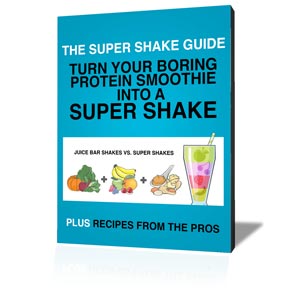Today my mission is to bust a myth. The myth in question? Eating healthy is more expensive. I hear that from people all the time. They are concerned that eating healthy is going to bust their food budget in these tight economic times. I am here to tell you can eat healthy and stay on track with money.
Today I want to give you a list of the best tips and tricks to eating healthy without breaking the bank. As always, your first line of defense is a budget. This is more a personal finance tip than a fitness tip, but an important tip none the less. Know how much you can spend, plan your list and meals accordingly and stick to it.
Stop eating out. This can be considered a personal finance and a health tip. One of the upsides of the recession (there actually have been a few) is that people are dining out less and cooking at home more. This will save you money. For example, lunch at a casual dining restaurant 3 days a week at $10 a meal equals $120 a month. That will go a lot farther in the grocery store than it does in a restaurant.
Now that you are committed to your budget and eating at home, here are some tips to help you make the best choices for your health and your wallet:
- Buy bulk grains. Make sure to check the price first, but often grains like quinoa or bulgur are very inexpensive bought from bulk bins vs. prepacked. These grains are highly versatile and can be used to make dishes with beans or other lean protein, in soups or in salads. Quinoa is also the only grain to be considered a complete protein.
- Beans are a great inexpensive source of protein. You can also use beans in place of a third or half of the meat in a recipe (like chili) to reduce cost and fat and increase fiber.
- Eggs are another inexpensive wonder. Eggs aren’t the “bad guy” like many once thought. A whole egg is not a bad thing for those without existing cholesterol issues. You can also use the whites only. Use in omelets, frittatas, or hard boil for a portable snack.
- Try to shop in season. Your farmers market is your friend. Often farmers market produce is fresher and less expensive than your local supermarket. Even without a farmers market, you will see a difference in price and quality in the grocery store when something is in season.
- Frozen vegetables can be used in place of fresh when out of season. Frozen vegetables have less sodium than canned and don’t go bad as quickly as fresh. Frozen vegetables go on sale a lot, so stock up when they are. The same goes with things like frozen chicken breasts.
- Replace the boxed cereal with oatmeal. Not the envelope variety, buy the large container of oats or buy from a bulk bin. Oatmeal can be jazzed up with frozen berries, nuts, or protein powder. My favorite combo-pumpkin puree, almonds, cinnamon and nutmeg.
- Learn to make your own bread and yogurt. It is easier than you think. Check out Artisan Bread in Five Minutes a Day, Healthy Bread in Five Minutes a Dayor the homemade yogurt video .
- Most cheese freezes well. When your store has it on sale buy extra and freeze for when you need it.
- Sweet potatoes are nutritional powerhouses that are very affordable. Bake them, make “fries” or use in any variety of casseroles or stews. They are also very portable and easy to make in the microwave.
- Buy a reusable water bottle and fill from home. Cheaper and better for the environment than buying bottled water.
- Find a health food store that sells spices in bulk. Often you only need small amounts of things other than the basics for a recipe. Buying from the bulk bins is again less expensive, often fresher than the jars , and you do not end up with tons of spices getting older and taking up space in your cabinet.
Combine this list with your other thrifty shopping habits and you will be eating healthy and staying on budget in no time. Please share you tips too!



